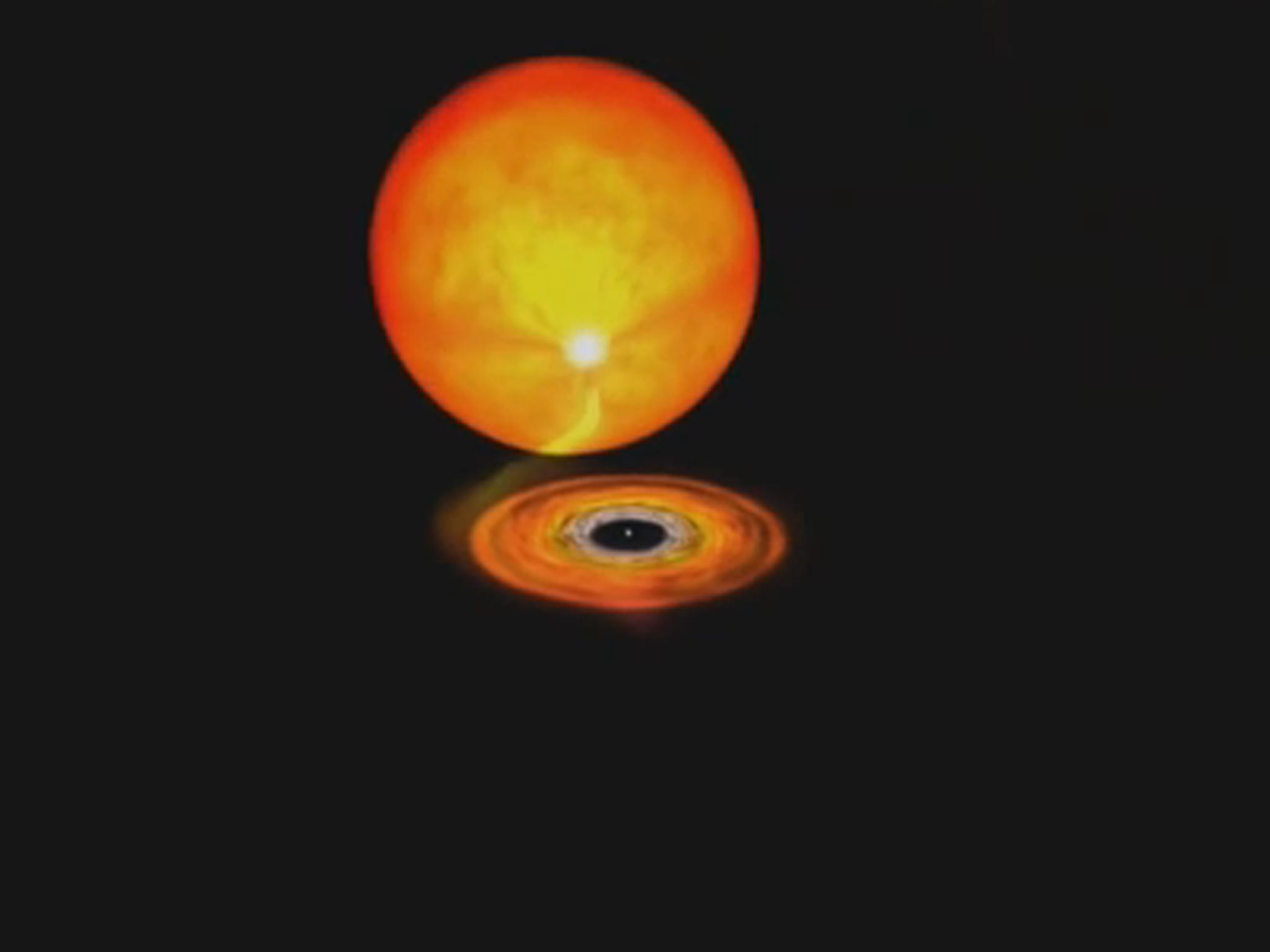The Independent's journalism is supported by our readers. When you purchase through links on our site, we may earn commission.
Astronomers discover pulsar undergoing radical transformation

Astronomers have discovered a small star undergoing radical transformations.
A team of international astronomers discovered the "millisecond pulsar", a fast spinning magnetized neutron star with a duel identity.
A neutron star is the closest thing to a black hole that astronomers can observe directly, compressing half a million times of Earth's mass into a ball a similar size of a city.
It is so dense that a teaspoonful would weigh the equivalent of a mountain.
The star, named PSR J1824-2452I, shifts backwards and forwards between emitting X-rays and radio waves. This 'switch' is caused by the rise and fall of gas streaming onto the pulsar from a companion star,according to Nasa.
This is the first direct evidence of a pulsar changing from one kind of object into another – like a caterpillar turning into a butterfly, ” Dr Simon Johnston, Head of Astrophysics at CSIRO’s Astronomy and Space Science division told Before it's News.
It was discovered by astronomers using a fleet of orbiting X-ray telescopes, including NASA's Swift and Chandra X-ray Observatory.
The European Space Agency International Gamma-Ray Astrophysics Laboratory detected a flash of X-rays on 28 March this year. The pulsar was observed by Swift's X-Ray telescope the following day.
A week after the discovery, a team led by Alessandro Papitto of the Institute of Space Sciences in Barcelona, Spain, directed ESA's XMM-Newton satellite toward the object. It detected X-ray pulses, which indicated a neutron star spinning once every 3.9 milliseconds.
Scientists analysing the changing arrival times of these pulses established the pulsar was joined by a small companion star, less than one fifth the size of our sun.
These two stars orbit each other every 11 hours. Scientists have said this is the first time they have seen both X-rays and fast radio pulses from one pulsar.
“This transitional object took us decades to find, and it provides us with a unique opportunity to observe a pulsar's intense magnetic field in action,” said Sergio Campana, an astronomer at Brera Observatory in Merate, Italy, and a co-author of a paper appearing in the journal Nature today.
Scientists had expected changes such as these to occur on million year time scales. They believe the discovery represents a long-sought intermediate phase in the life of these powerful objects.
Join our commenting forum
Join thought-provoking conversations, follow other Independent readers and see their replies
Comments
Bookmark popover
Removed from bookmarks